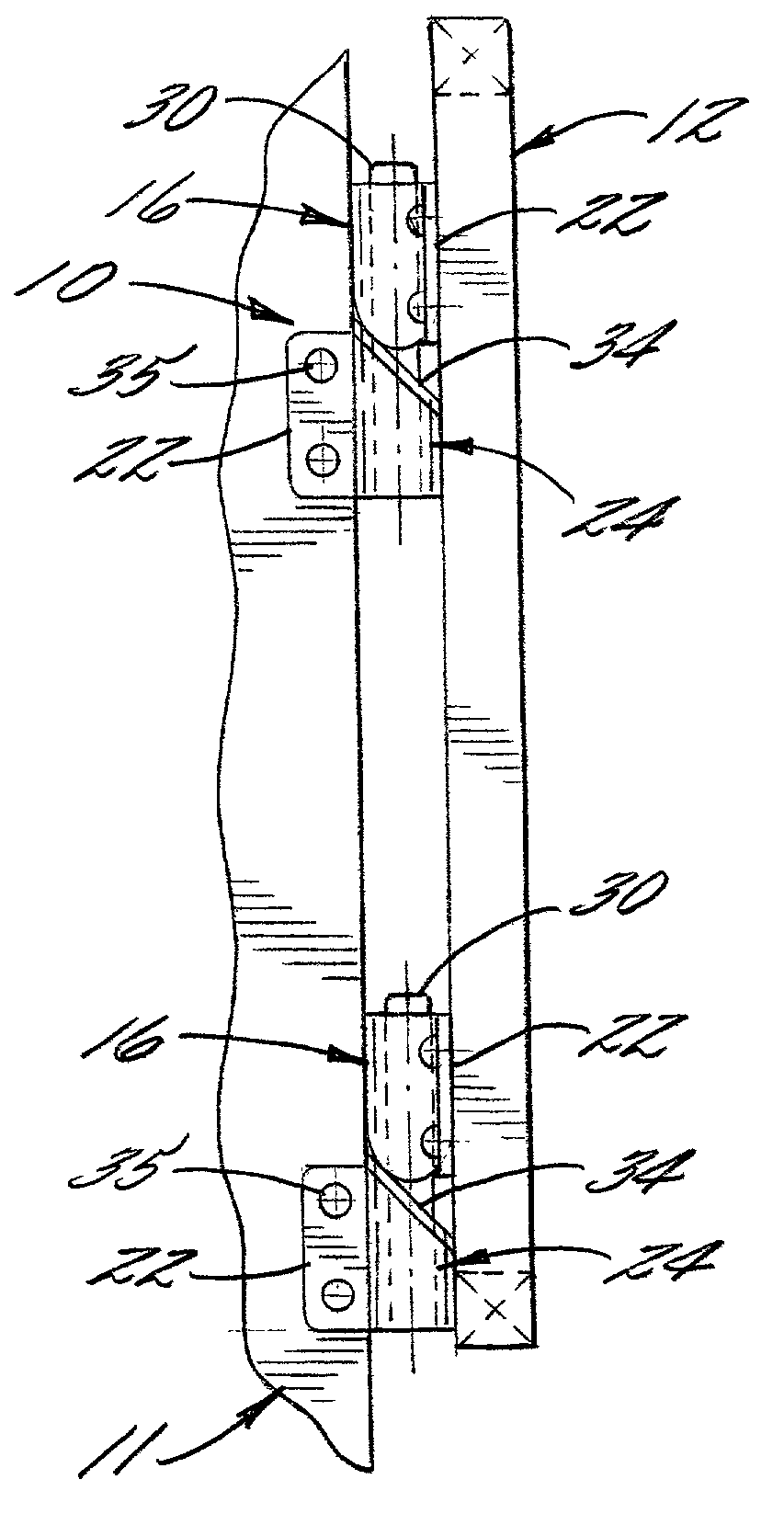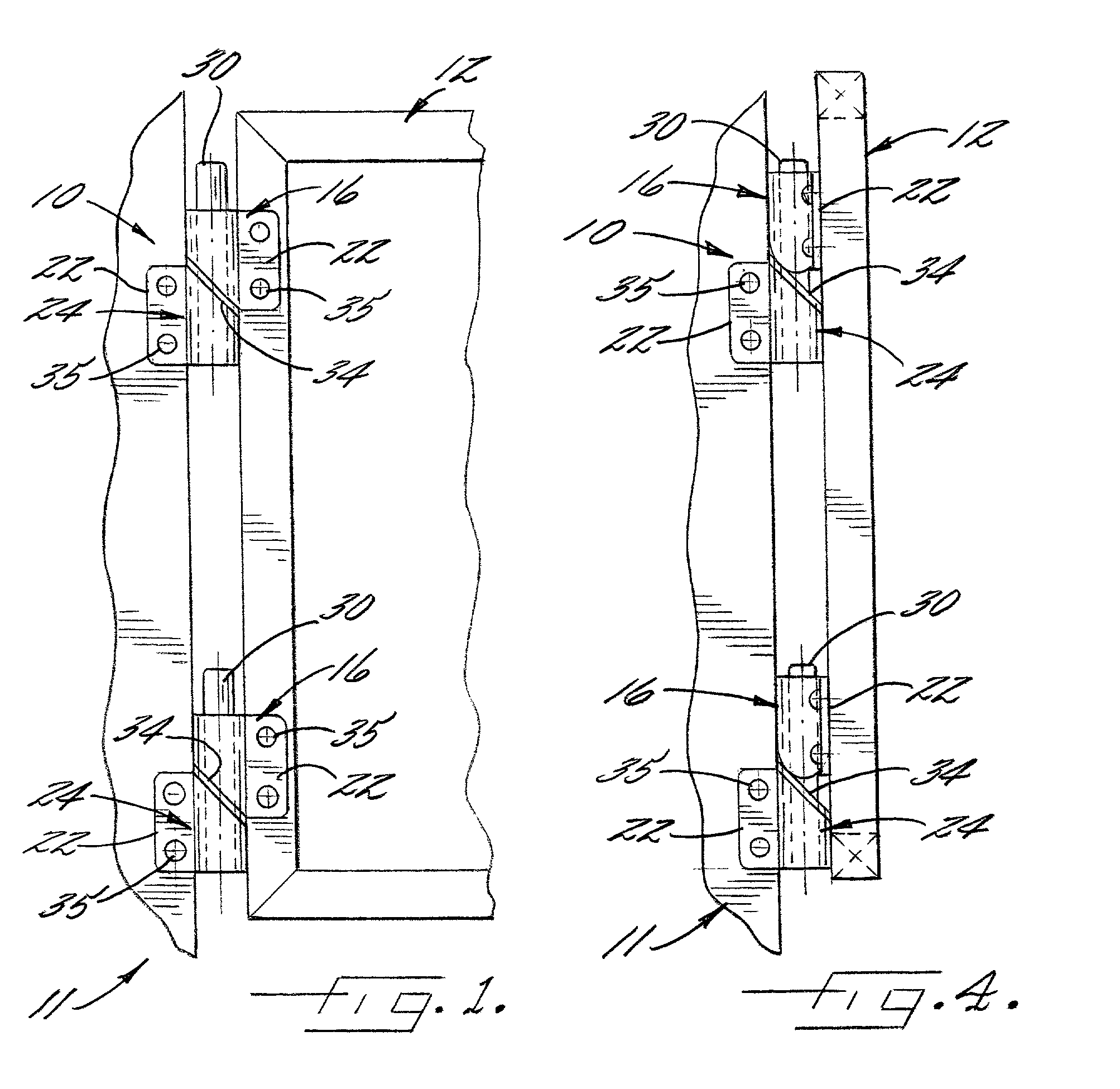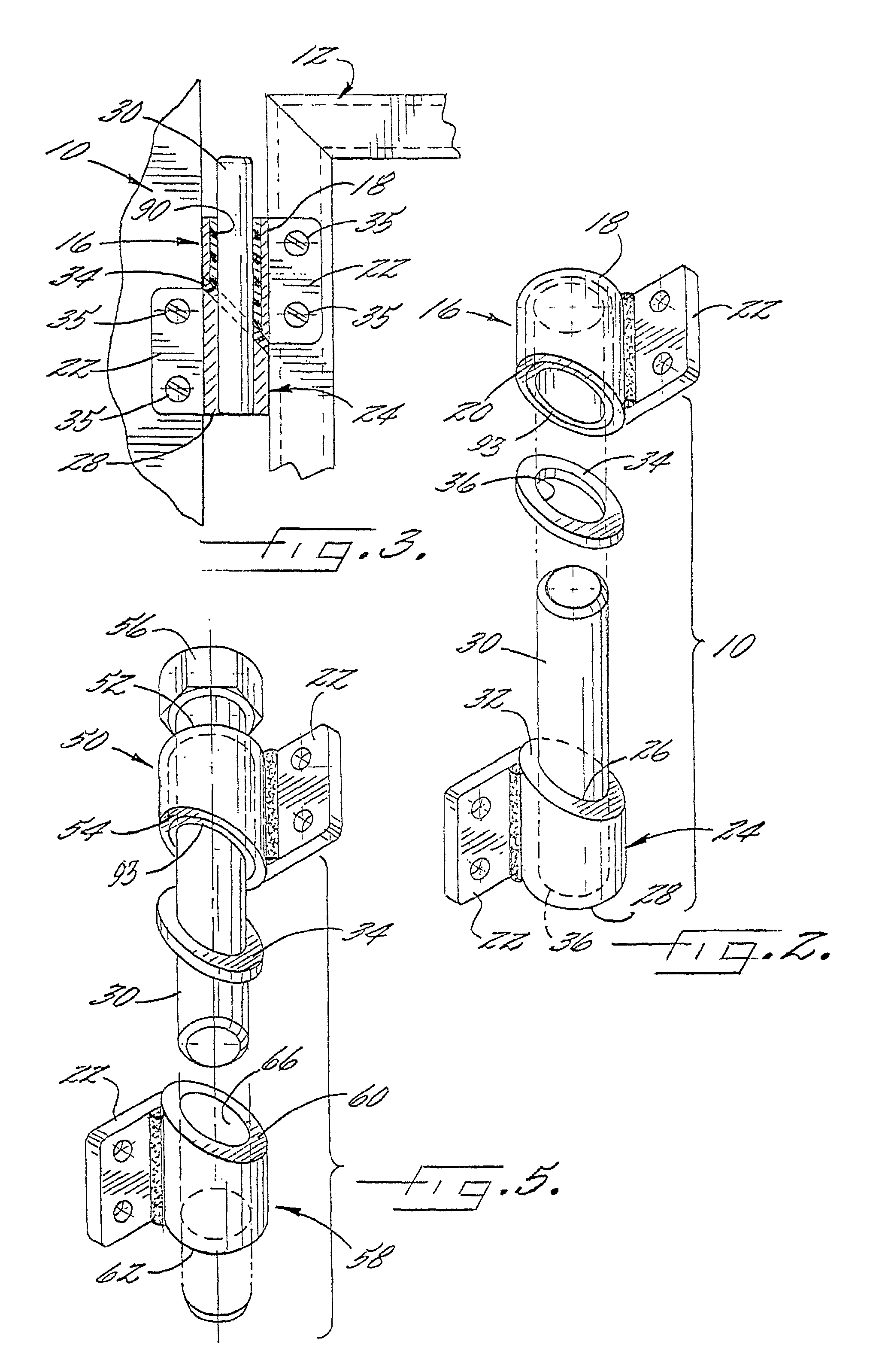Gravity hinge
a gravity hinge and hinge technology, applied in the field of hinge closures, can solve the problems of frequent maintenance, premature failure of the hinge without some form of external lubrication, and polymer cams are far more susceptible to torsional failures than metallic cams, and achieve the effects of reducing or eliminating electrical conduction, and being convenient to maintain
- Summary
- Abstract
- Description
- Claims
- Application Information
AI Technical Summary
Benefits of technology
Problems solved by technology
Method used
Image
Examples
Embodiment Construction
[0021]The invention provides a gravity hinge for use with a gate, door or other hinged closure. As used herein, the term “hinge” has its usual definition; e.g., “a jointed or flexible device on which a door, lid or other swinging part turns.” Merriam-Websters' Collegiate Dictionary (online edition, cited as of Jan. 9, 2001). Referring now to FIG. 1, there is shown a hinge 10 in accordance with the invention. For ease of discussion and presentation to the reader, the hinge 10 is shown in conjunction with a gate or door 12 and support post 14 such as would be commonly found in the practice of the invention. This particular setting, however, should not be interpreted as limiting in any way the scope of the invention.
[0022]Referring now to FIG. 2, in a preferred embodiment the hinge 10 according to the invention comprises an upper tubular cylindrical knuckle 16. As used herein relational terms such as upper and lower are used for explanatory purposes and as an aid to the reader's interp...
PUM
 Login to View More
Login to View More Abstract
Description
Claims
Application Information
 Login to View More
Login to View More - Generate Ideas
- Intellectual Property
- Life Sciences
- Materials
- Tech Scout
- Unparalleled Data Quality
- Higher Quality Content
- 60% Fewer Hallucinations
Browse by: Latest US Patents, China's latest patents, Technical Efficacy Thesaurus, Application Domain, Technology Topic, Popular Technical Reports.
© 2025 PatSnap. All rights reserved.Legal|Privacy policy|Modern Slavery Act Transparency Statement|Sitemap|About US| Contact US: help@patsnap.com



